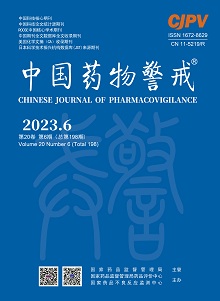|
|
Cytotoxicity of HK-2 induced by anthraquinones components of Polygonum multiflorum
LAN Jie, WEN Hairuo, HUANG Zhiying, WANG Qi, MA Shuangcheng
2023, 20(6):
616-622.
DOI: 10.19803/j.1672-8629.20230138
Objective To determine the correlation between nephrotoxicity and five components of Polygonum multiflorum. Methods After HK-2 cells were treated with 2.5, 10, 20, 40, 80, 120, 160 μmol·L-1 emodin, aloe-emodin, rhein and 3.125, 12.5, 25, 50, 100, 150, 200 μmol·L-1 physcion and chrysophanol for 24 and 48 hours, the effects of these monomers on viability of HK-2 cells were determined with the cell counting kit. After HK-2 cells were treated with 6.25, 12.5, 25, 50 and 100 μmol·L-1 emodin, aloe-emodin, rhein, physcion and chrysophanol for 24 and 48 hours, the cell culture medium was collected to detect the release level of lactate dehydrogenase(LDH). The expression level of Kim-1 protein was detected via Elisa assay, the changes of the mitochondrial membrane potential (MMP) were detected by the JC-10 fluorescence probe, and the effects of the five anthraquinones components on apoptosis were measured by flow cytometry. Results The viability of HK-2 cells decreased with the increased concentration and administration time of emodin, aloe-emodin, rhein and chrysophanol significantly (P<0.05), but remained more than 75% after administration of 200 μmol·L-1 physcion and chrysophanol for 48 hours. 48 hours after administration of 100 μmol·L-1 emodin, aloe-emodin and physcion, the release level of LDH was significantly higher than in the control group (P<0.01). After administration of the five anthraquinone monomers in Polygonum multiflorum, the level of Kim-1 in the HK-2 cell supernatant didn't increase with the concentration, but increased significantly compared with the control group after 100 μmol·L-1 administration (P<0.05). The mitochondrial membrane potential of HK-2 cells decreased with the concentration of treatment and duration of administration after the administration of the five anthraquinone components in Polygonum multiflorum. Conclusion Emodin, aloe-emodin and rhein are considered the potential anthraquinone components that causes nephrotoxicity in Polygonum multiflorum, and the nephrotoxicity risk of other components in Polygonum multiflorum needs to be studied.
References |
Related Articles |
Metrics
|
